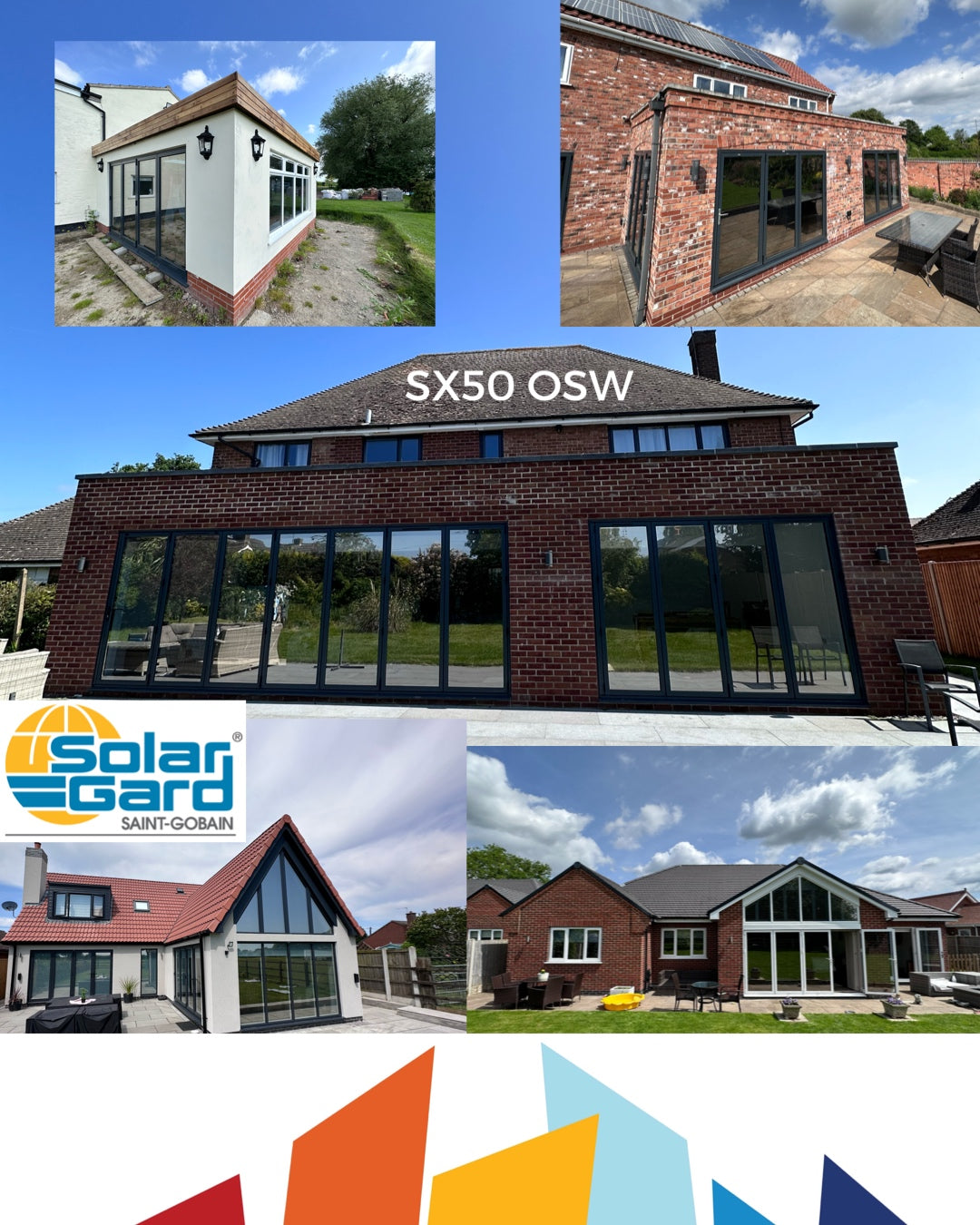New builds with efficient glass and how to effectively deal with heat using window films. Due to building regulations becoming tighter with increasing needs to insulate more and reduce heat loss new build homes have become little hot boxes, literately. Ever since we started seeing low E glass and then more recently warm edge (plastic spacers within the double glazed units) and the air gap no longer being just air but a more insulating Argon gas; combine this with better insulation has seen a drastic reduction in performance when using internally fitted films. As a very rough estimate fitting an internal window film on the latest low E double glazing units will be approximately 10 - 20 % less effective than when fitted on older double glazing. Combine this with better construction and the reductions in performance become very noticeable by becoming unnoticeable in terms of internal temperature reductions and comfort levels.
You would have to fit a dark internal window film on modern glass to reach the performance levels that medium tinted film would have achieved 10 -15 years ago. Fitting a dark window film on a domestic home is not recommended it would significantly reduce natural light and potentially affecting your wellbeing during darker months. You also get the radiator effect from internal films being fitted to low E glass as a little battle rages between the low E glass trying to retain the heat and the internal films trying to reject it. The consequence is the internal pane of glass heats up to a point on some days that can be too hot to touch. This could be a potential issue should children lean on the hot glass with bare skin. Fitting internal films which absorb high levels of heat should be avoided on low level glass such as Bi-Fold, French and Sliding doors for example.
This high heat absorption could also increase the risk of thermal stress to the glazing system as the inner pane expands at a higher rate than the external pane which could result in seal failure and then the unit misting up or worst case breakages if they are fitted on incompatible glass types.
Feedback from our customers telling us "we had hoped it would have done more" started the shift for us back to external windows films in around 2014 when customers with new build homes or new extensions often with Bi-folds who needed maximum heat gain reductions.
The benefit of using external window films is they pretty much double the heat gain reduction performance of their internal counterparts when fitted on the latest double glazing systems. I always use the simple example of our Solar Gard Silver 35 internal film which has been tested on 4/12/4 mm clear double glazing (no low E) achieves 44% solar heat gain reduction. When you factor in the modern glass is more likely to be 4/16/4 mm Low E and Argon filled space deduct for arguments sake 15% that takes the solar heat gain reduction down to 30% approx. Combine this with larger areas of glass and better insulation it's not enough. We need to achieve at least 50% solar heat gain reduction to make a noticeable difference. By fitting the Solar Gard Silver 35 Outside Weatherable product we can achieve nearly 65% solar heat gain reduction even on modern glass, you don't need to be a mathematician to realise that's double.
We personally have had customers would recorded before and after temperatures of internal and external temperatures post installation were seeing up to 10ºC drop in internal temperatures when using the external Silver 35 product.
Please don't be dazzled by companies who say they can achieve heat reductions of 70 or 80% from light or medium films fitted internally, they are often quoting total solar energy reduction figures (which is a completely different measurement) often tested on single glazing not double and certainly not on Low E double. Either they are ill-informed and uneducated or simply after an easy sale either way it will make you think window film doesn't work when in fact it is very effective and cost effective when correctly specified but this is a whole separate future article on misleading figures.
The other benefit of external film is because they are dealing with sun directly and not having to push heat back through any type of glazing system means you can have films a much much lighter product and still achieve or get within a few percent of the magical 50% solar heat gain reduction figure. For people who purchased a property because it was flooded with natural light but are struggling with the heat you can have you cake and eat it.
As a consequence the glazing system is at lower risks from thermal stresses as the glass and the frames will be absorbing less solar energy through heat transfer from the previously hot glass into the frames. Win win. You get a low risk product and a more comfortable home.
Future article: The issues for us installing externally, lifespan and maintenance.
In the meantime just get in touch if you think this could be the best route for your journey to a more pleasant home.


